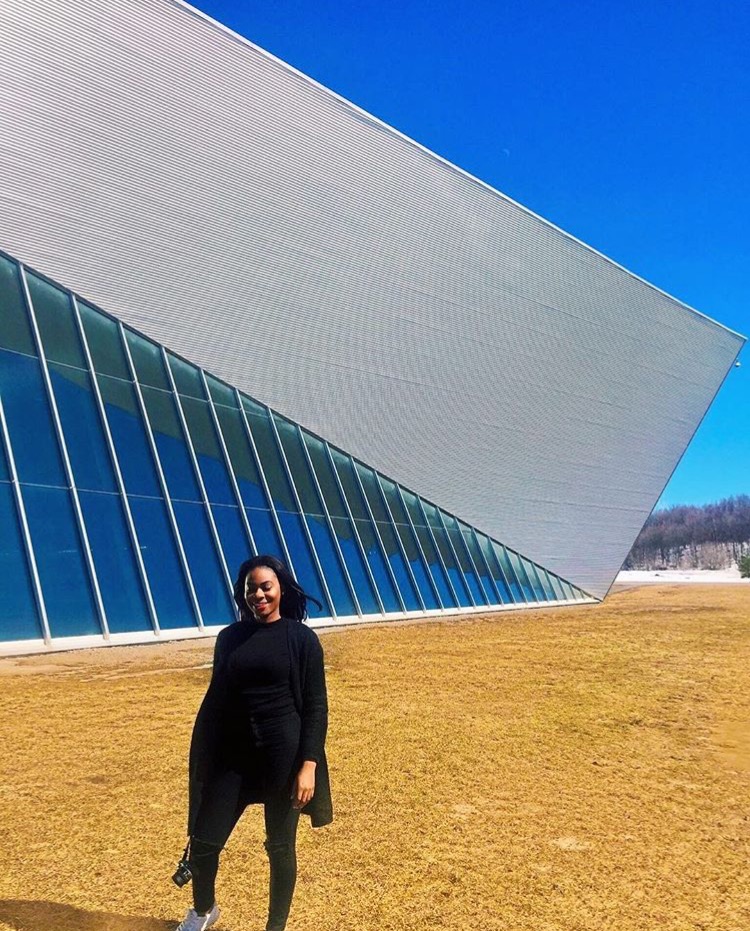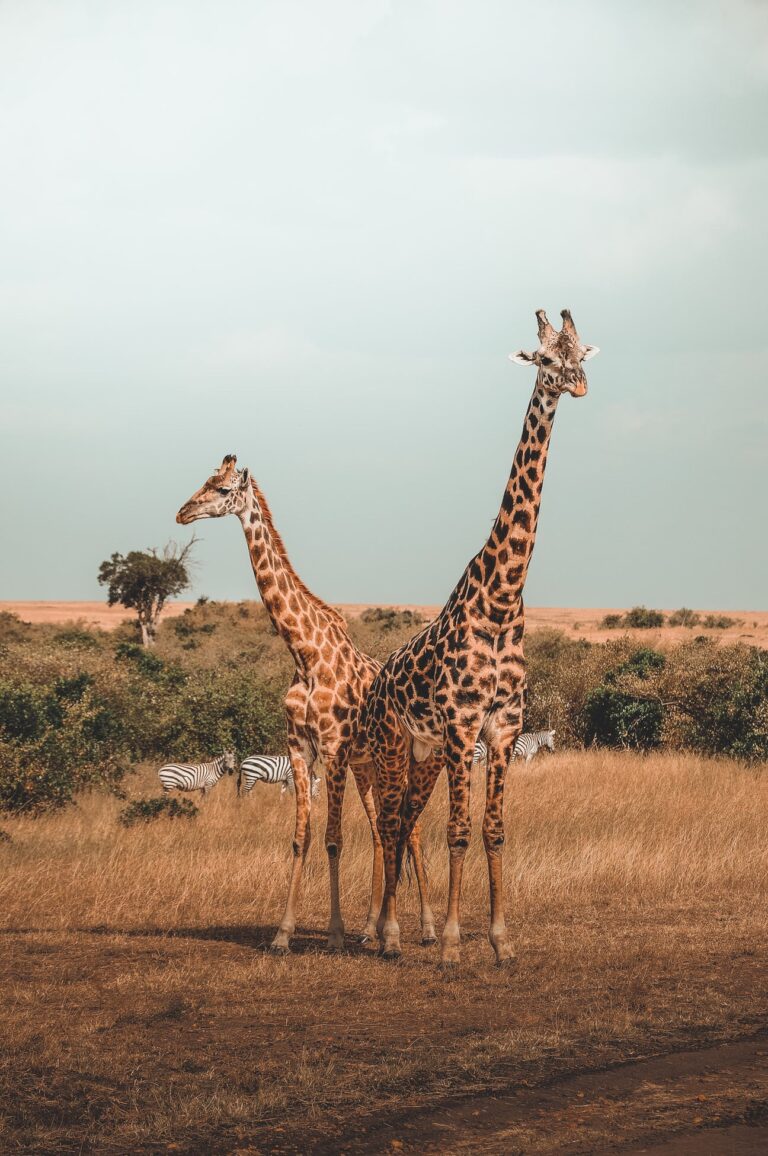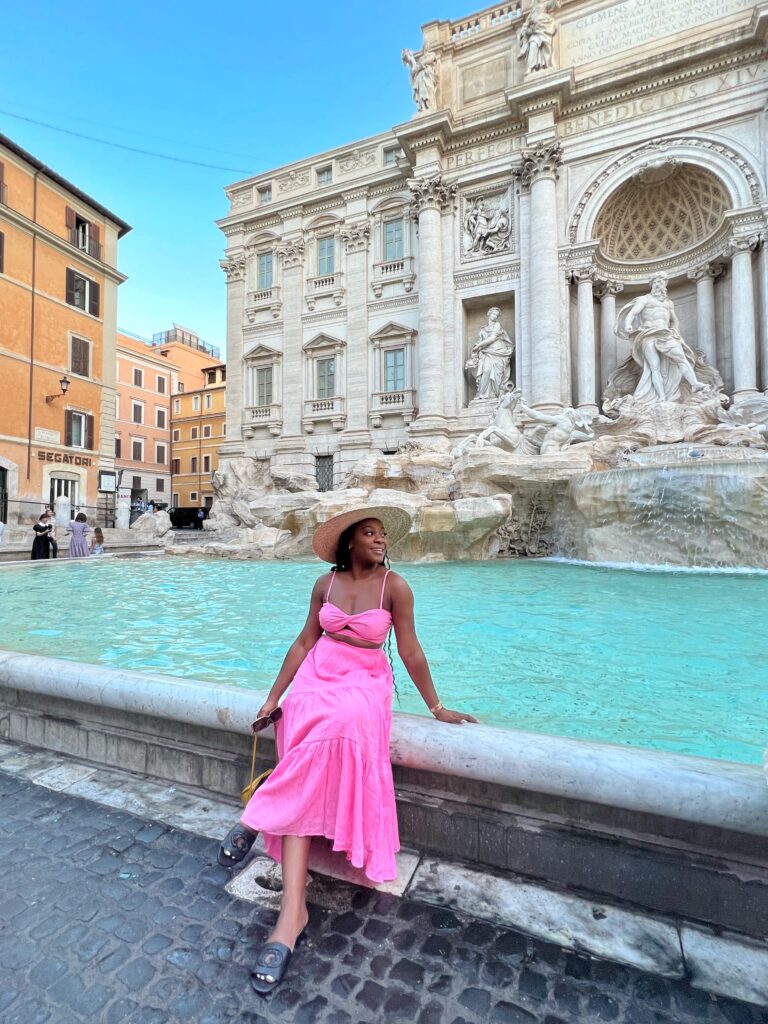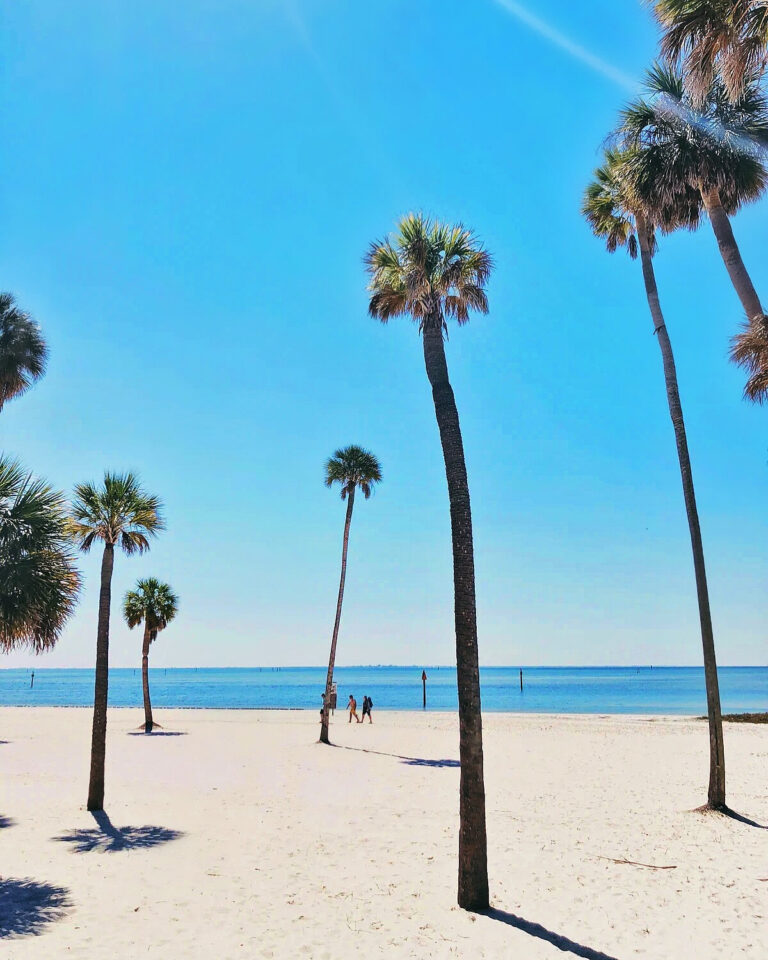A Travel Guide to Japan: How to Spend 7 Days in Tokyo & Kyoto
Let’s be honest, not everyone has two weeks to explore Japan. But if you’ve got seven days to work with, that’s more than enough time to get a taste of everything this beautiful country has to offer.
This was my second time in Japan, and I split my trip between Tokyo and Kyoto. It felt like the perfect mix of city energy and peaceful cultural moments. If you’ve been thinking about visiting Japan or you’re already planning a trip, this guide is for you. I’ve included where I stayed, what I did, things to know before you go, and of course, the food.
Let’s get into it.
Getting to Japan
I live in Toronto, Canada so I caught a 12-hr flight from Toronto to Kyoto via Air Canada. It was a pretty straightforward flight with no delays and it felt really comfortable. I love flying to Tokyo because there are a lot of direct flights to the airport.
Important thing to note: Tokyo has two airports, Tokyo Haneda and Narita Airport. After flying to both on two occasions, I would say that flying to Haneda is the better option simply because it is closer to the city and thus, airport taxis and transportation will be cheaper. It takes about 30 minutes to get to the city from Haneda Airport and compared to Narita airport that takes more than an hour, your best bet is definitely Haneda. If you get a good flight deal where the price makes sense and overall saves you money, then of course go for Narita.
Getting travel insurance
Just like every country I visit, I always recommend getting travel insurance. We hope and pray nothing bad happens when we travel, but we also have to protect ourselves and have peace of mind knowing we have covered our bases. Please, please, please get travel insurance before you visit. You can get one through your credit card which I have but I also like getting even extra protection for a very low cost using Safety Wing. I have linked it below.
Getting from the airport to your hotel
While the Japanese train system is great, I doubt that you’ll want to figure it out on your own the first time you land at the airport. It can be very overwhelming. I recommend booking a private transfer from the airport to your hotel at least the first time you land in Tokyo. I booked mine using Viator and I’ve linked the exact one I used below. Service was really great and it was an English speaking driver.
Things to Know Before Visiting Japan
- Here are the tips I actually found useful. Save this before you go.
- Use Google Maps, but double-check signs.
It’ll guide you through train lines, but it won’t always tell you which platform or exit to take. Some stations are huge and confusing. Look around, read signs, and give yourself time. - Get a Suica or Pasmo card.
These IC cards work on trains, buses, and even in convenience stores. If the machine won’t let you top up, just go to the counter. They’ll help. - Train station exits matter.
Choosing the wrong one can leave you way off. Always check which exit is closest to your destination before heading out. - People won’t always offer help, even if you look lost.
It’s not rudeness, it’s politeness. Ask for help if you need it. Most people will do their best to assist you. - Carry a small bag for trash.
There are barely any public bins, but the streets are spotless. Hold onto your trash until you find a place to toss it, usually at train stations or convenience stores. - No tipping. No loud convos in restaurants. Slurping is fine.
Japanese dining etiquette is simple: eat quietly, don’t tip, and return trays when you can. - Bathrooms are clean, free, and everywhere.
But not all of them have paper or soap. Carry tissues and hand sanitizer just in case. - If you’re traveling with luggage or a stroller, prep for stairs.
Not every station has escalators or elevators. Pack light if you can. - Trains run on the dot.
If the schedule says 3:41 PM, the train will leave at 3:41 PM. Not a minute later. - Book the popular stuff in advance.
Shibuya Sky, TeamLab, Mario Kart, and kimono rentals often sell out. Don’t wait until the last minute. - Get a pocket Wi-Fi or eSIM card. I used Airalo while in Japan and it was fantastic. Staying connected to the internet is key. You’ll need it for directions, train times, and translation.
How I split up my trip: Tokyo and Kyoto
I spent three days in Tokyo and four in Kyoto. If it’s your first time, I really recommend this kind of split. Tokyo gives you the busy, modern side of Japan. Kyoto slows things down and lets you experience more culture and history.
Tokyo
Where I Stayed in Tokyo
The Gate Hotel by Hulic
This was such a good base for my Tokyo stay. The location? Unbeatable. It’s right in the heart of Ginza, so you’re surrounded by shops, restaurants, and easy subway access. The rooms were modern and sleek, with huge windows that gave me a front-row seat to the Tokyo city lights at night. The rooftop bar is a vibe, especially in the evening. If you want somewhere central, stylish, and super convenient, I really recommend it.
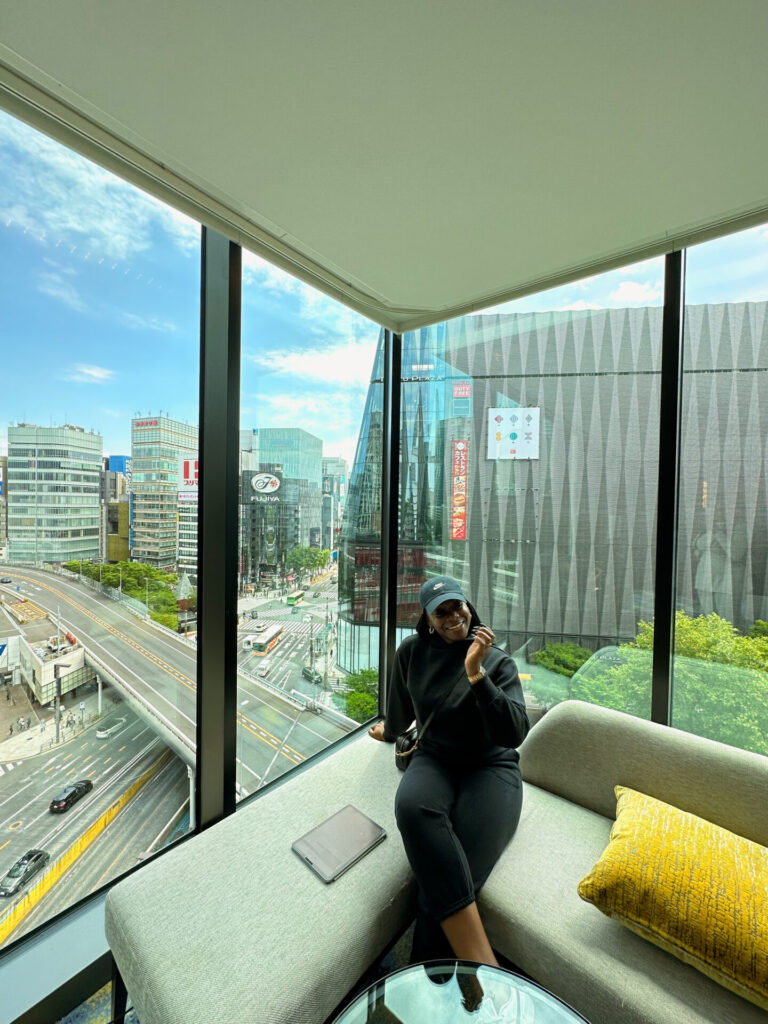
What I Did in Tokyo (and Loved):
If you can, I recommend booking a full day tour of Tokyo where you can hit so many of these bucket list places at once. You can book it here. But here are some of the things I loved and enjoyed while in Tokyo.
1. Sensoji Temple
This is Tokyo’s oldest temple, and it’s a whole experience from the moment you walk in. You’ll start at the Kaminarimon Gate with its giant red lantern, then stroll down Nakamise Street lined with little souvenir shops and street snacks. The temple itself is stunning, and I even did a quick fortune reading (spoiler: it was good).

2. Tsukiji Fish Market
A paradise for food lovers. I tasted everything from grilled scallops to tamagoyaki (sweet rolled omelet), but the standout was a skewer of candied strawberries that hit every time. You’ll want to go early while the market’s buzzing and the food is fresh.
3. TeamLab Planets
This place is like stepping into another universe. It’s a barefoot, interactive art experience with light, water, mirrors, and floral projections that surround you. At one point I was walking through knee-deep water in a dark room with floating lights—it’s hard to explain, but it’s magical.
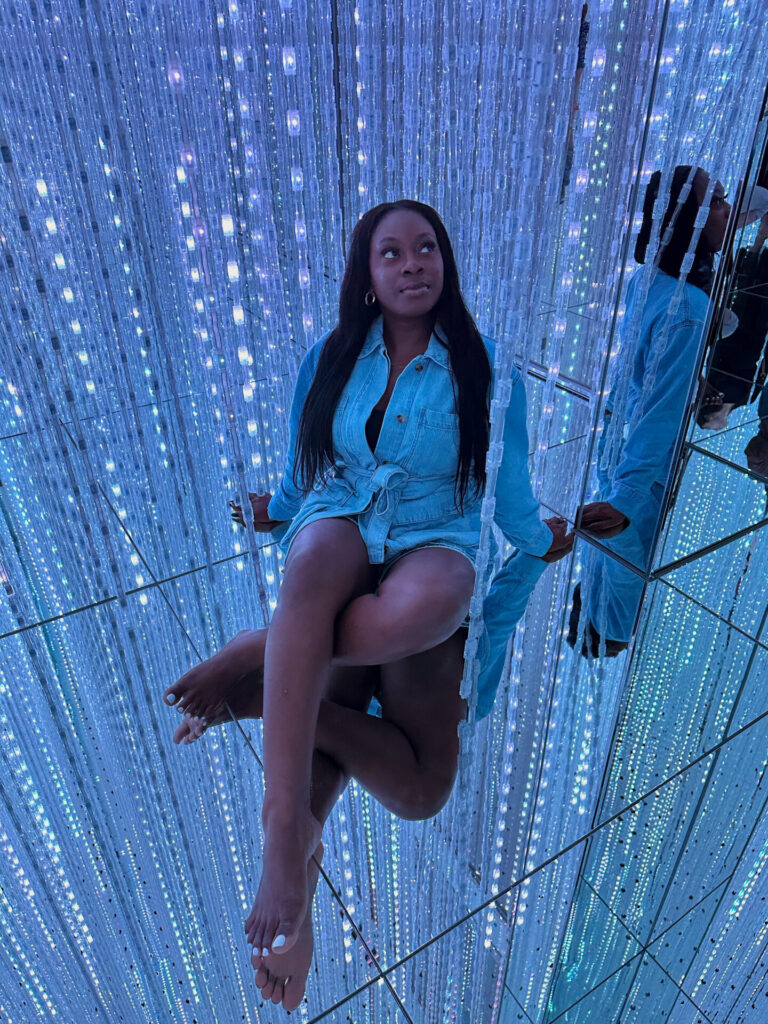
4. Shibuya Sky
The elevator ride alone builds the hype, but once you get to the top, you’re rewarded with a panoramic view of Tokyo that goes on forever. I went at sunset and watched the city light up from above. It’s peaceful and electric at the same time.
5. Akihabara
If you’re into anime, tech, or gaming, this is your playground. If you’re not, it’s still worth visiting just for the sensory overload. Neon lights, multi-story arcades, claw machines, and themed cafés everywhere you look.

6. Shibuya Crossing
It’s the kind of chaos that somehow makes perfect sense. Hundreds of people cross from all angles at once, and it’s over in seconds. I watched it a few times before walking across myself, and it actually felt iconic. If you can, grab a coffee from a nearby café and just people-watch from above.
Things to Know About Tokyo
- The trains can be packed during rush hour. Try to travel outside those times.
- Have a coin purse. I got so many coins while in Japan. It never ends.
- Get a Suica or Pasmo card to make train rides easier. You can use it for buses and convenience stores too.
- Book tickets for TeamLab and Shibuya Sky in advance. They sell out fast.
- Charge your phone before you head out or carry a power bank with you. You’ll need it all day.
Kyoto
Where I Stayed:
Good Nature Hotel Kyoto
One of the most peaceful and thoughtful hotels I’ve stayed at. It’s modern but deeply rooted in wellness and sustainability, from the earthy decor to the in-room amenities. My room felt like a retreat after long days of sightseeing, and the hotel’s restaurant and bakery are both incredible. Plus, it’s centrally located and made it easy to get around Kyoto without feeling rushed.

What I Did in Kyoto (and Recommend):
1. Japanese Tea Ceremony
This was one of the most calming things I did in Japan. The ceremony is so intentional, from the way the matcha is whisked to the way you’re meant to drink it. It was a moment of stillness I didn’t know I needed, and learning the cultural meaning behind each step made it even more special.
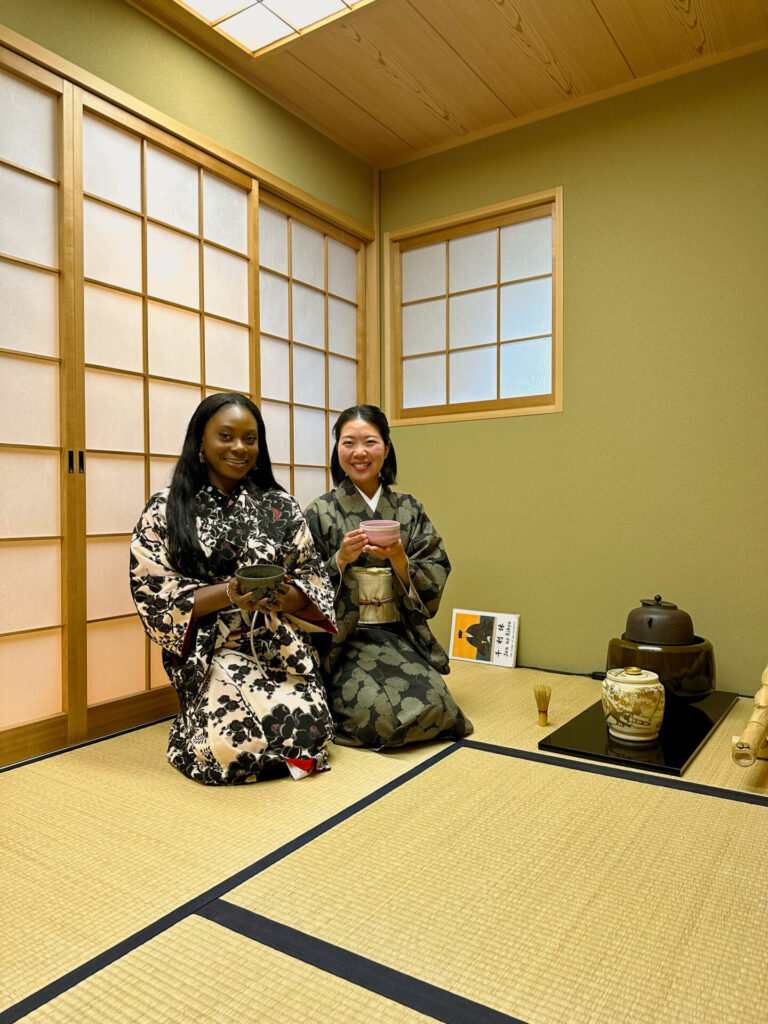
2. Kimono Rental
Wearing a kimono and walking through the historic streets of Kyoto felt like being part of a story. The shop dressed me from head to toe, including traditional accessories and even a little purse. It made the photos (and the entire day) feel more immersive and memorable.
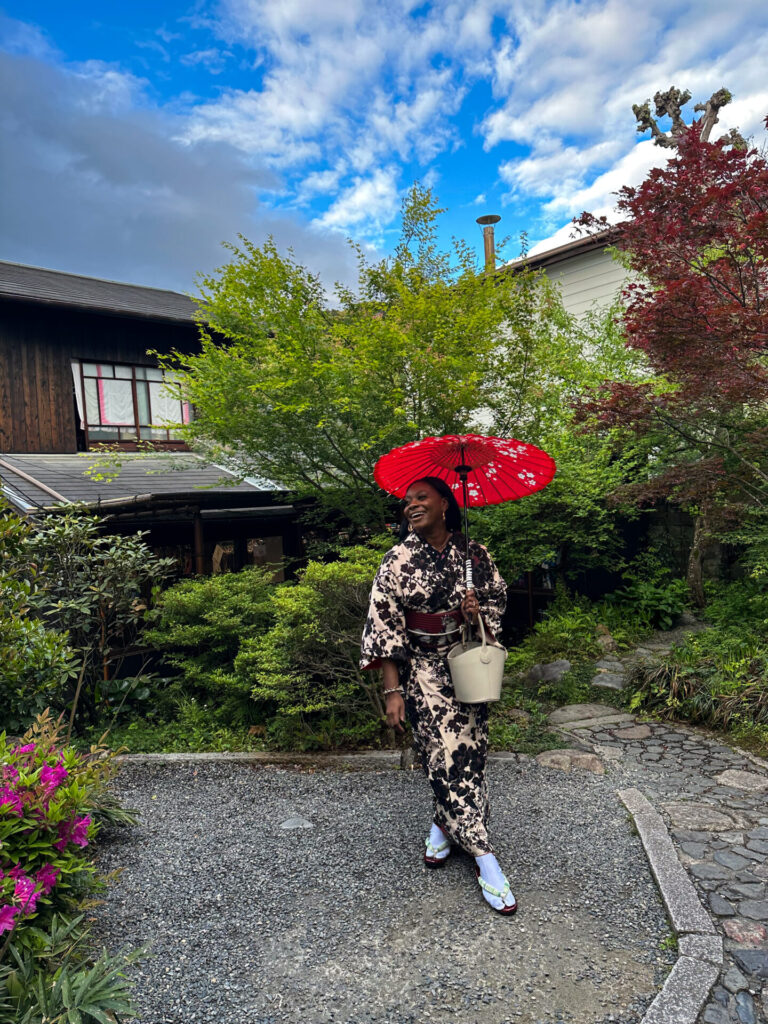
3. Fushimi Inari Shrine
Those red torii gates really do go on forever. I started the walk early in the morning while it was still quiet, and it felt surreal. The higher you climb, the more peaceful it gets. If you can, go as early as possible to soak it in without the crowds.

4. Kinkakuji Temple (Golden Pavilion)
This place looks like it was made for postcards. The temple, covered in gold leaf, sits perfectly by a reflective pond and surrounded by pine trees. It’s one of those spots that makes you pause and take a breath.
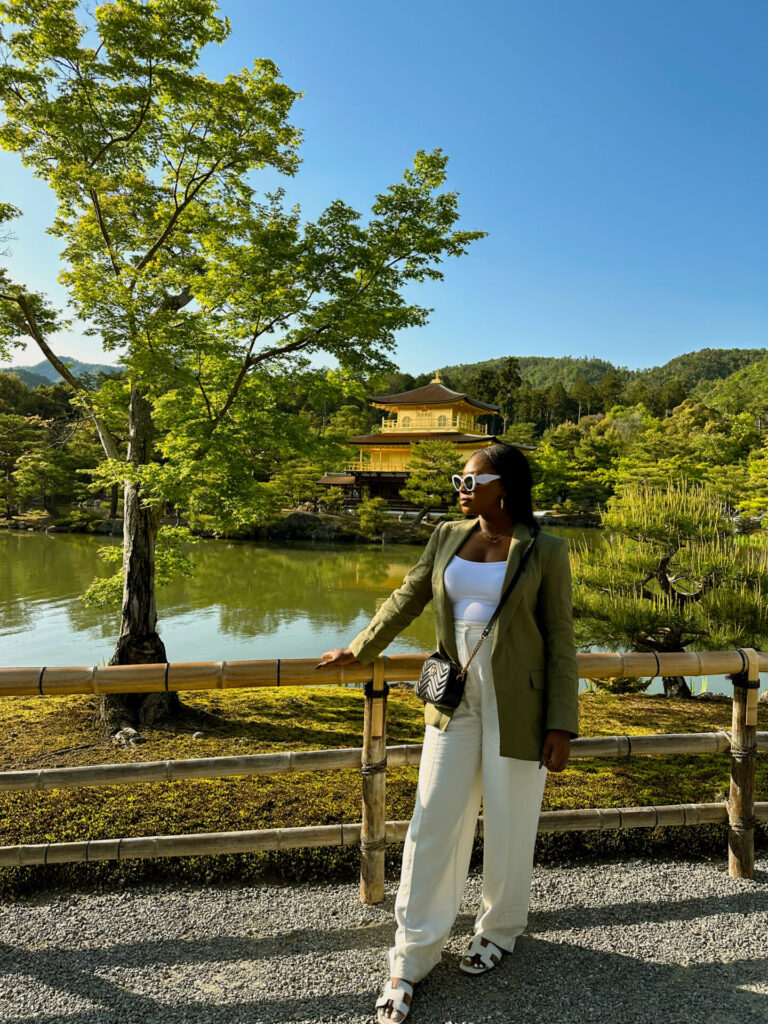
5. Arashiyama Bamboo Forest
Walking through the tall green bamboo stalks felt like stepping into another world. The light filters through in such a dreamy way, and when the wind blows, the bamboo sways and creaks softly. It’s a short walk, but totally worth the early morning visit.
6. Nishiki Market
This is Kyoto’s food street. I tried everything from fresh mochi to grilled skewers and yuba (tofu skin) donuts. It’s busy, but fun, and a great way to get a feel for local flavors in bite-sized form.
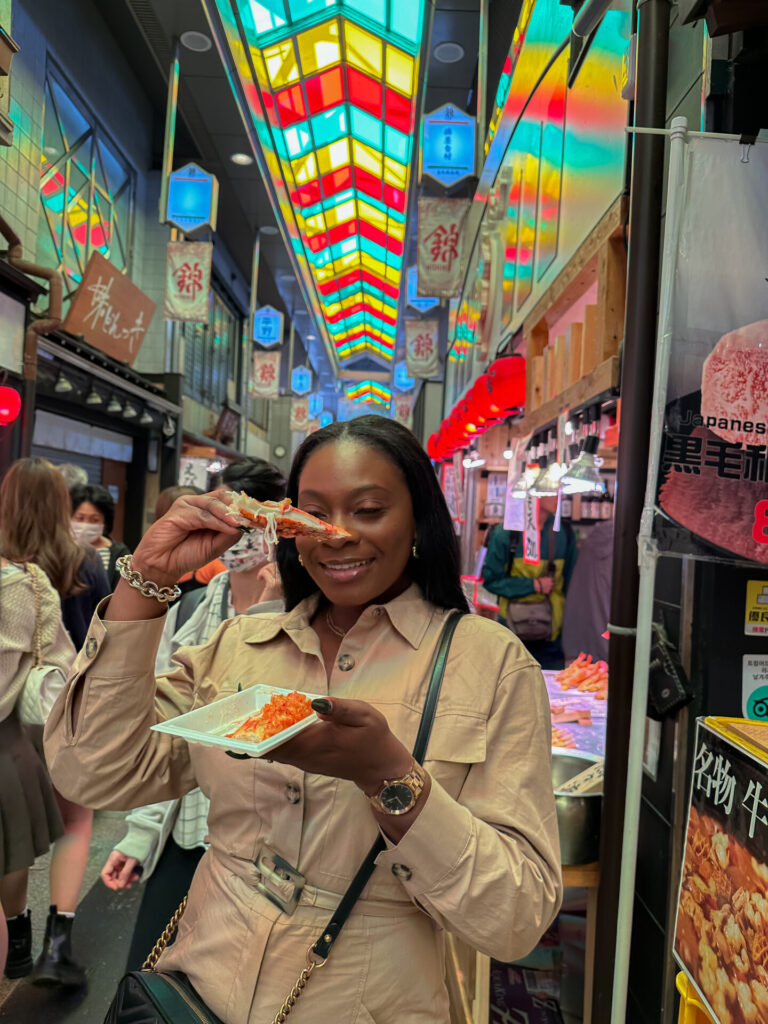
Things to Know About Kyoto
- It’s a lot more chill than Tokyo. Take your time here.
- You’ll be walking a lot. Wear comfortable shoes.
- Some places are easier to reach by bus, not train, but Google Maps has your back.
- Mornings are the best time to visit temples. Less people, more peace.
My 7-Day Japan Itinerary
Day 1
Arrive in Tokyo. I flew into Haneda because it’s closer to the city and saves on transport.
Day 2
Full Tokyo day. Sensoji Temple, Tsukiji Fish Market, TeamLab Planets, then sunset at Shibuya Sky.
Day 3
Morning visit to Meiji Shrine and Tokyo Tower. Took the bullet train to Kyoto in the afternoon.
Day 4
Tea ceremony and kimono rental in Kyoto. Took the rest of the day to relax.
Day 5
Fushimi Inari Shrine, Kiyomizu Temple, and Arashiyama Bamboo Forest.
Day 6
Started the day at Nishiki Market. Took a train back to Tokyo in the afternoon and spent the evening in Akihabara.
Day 7
Departure day.
Places to Eat in Tokyo
• Tsukiji Market – Fresh sushi, strawberries on a stick, all the good stuff.
• Afuri Ramen – Their yuzu ramen is so different but so good.
• Ichiran Ramen – Worth the hype. You sit in your own booth and get your ramen in silence.
• FamilyMart – Just trust me. Grab an egg sandwich.
Places to Eat in Kyoto
• Nishiki Market – Yakitori, mochi, seafood, and so many other snacks.
• Omen Kyoto – For fresh udon.
• Ippudo Ramen – Always a solid pick.
• During the tea ceremony – You’ll get a small traditional sweet with your matcha, and it’s so good.
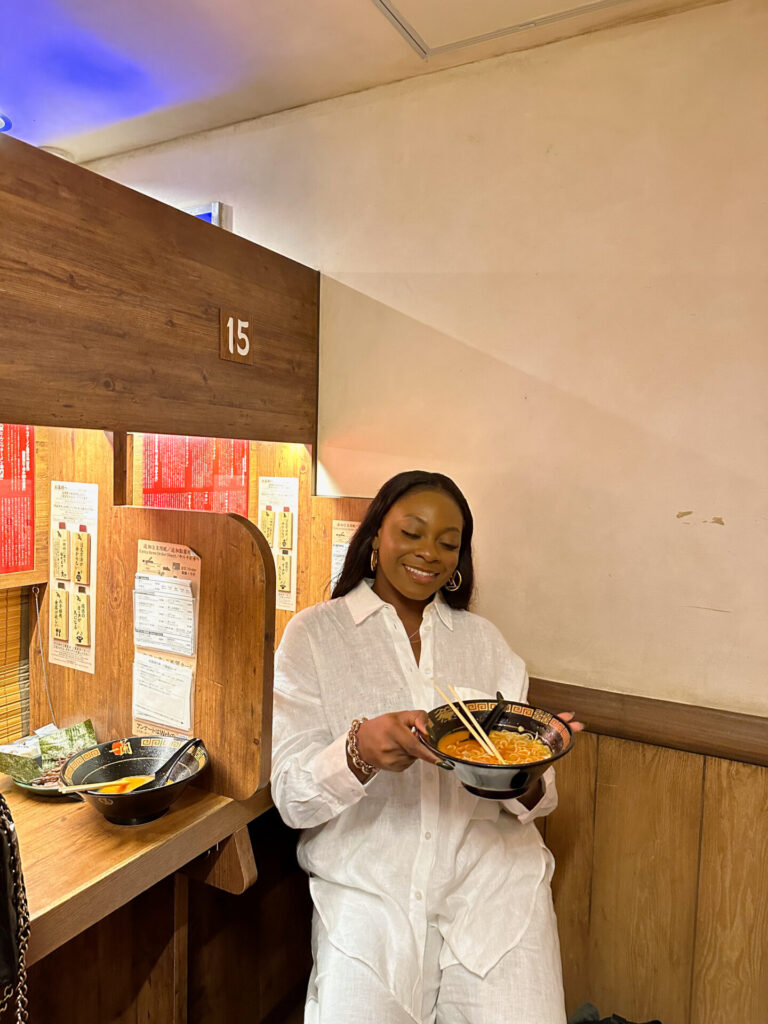
Conclusion
Japan is one of those places that stays with you. I hope this guide helps you plan your own trip and gives you ideas on what to see, eat, and do. If you’re going soon, save this post and send it to your travel buddy. And if you have questions, feel free to message me on Instagram @theufuoma. Always happy to help.
